The clock is ticking in emergency situations, and every second counts, particularly at CERN. Depending on the access point and the distance to be covered inside for example the Large Hadron Collider (LHC) tunnel, the CERN Fire Brigade takes several minutes to search for people in dire need of assistance. That’s why the BE-CEM group developed a revolutionary cutting-edge mobile robot which is equipped to search for people in emergency situations and provide critical information to rescue teams, allowing them to make informed decisions and act swiftly.

But that's not all. The robot is also capable of evaluating a person's respiration rate without any physical contact using state-of-the-art radar technology. Furthermore, BE-CEM group is currently working on the development of a non-contact monitoring system capable of simultaneously monitoring multiple physiological and non-physiological patient signals. This embedded system has the potential to revolutionize the field of healthcare. By creating a contactless monitoring system, medical staff can indeed obtain a more complete understanding of a patient's health state without implementing invasive procedures.
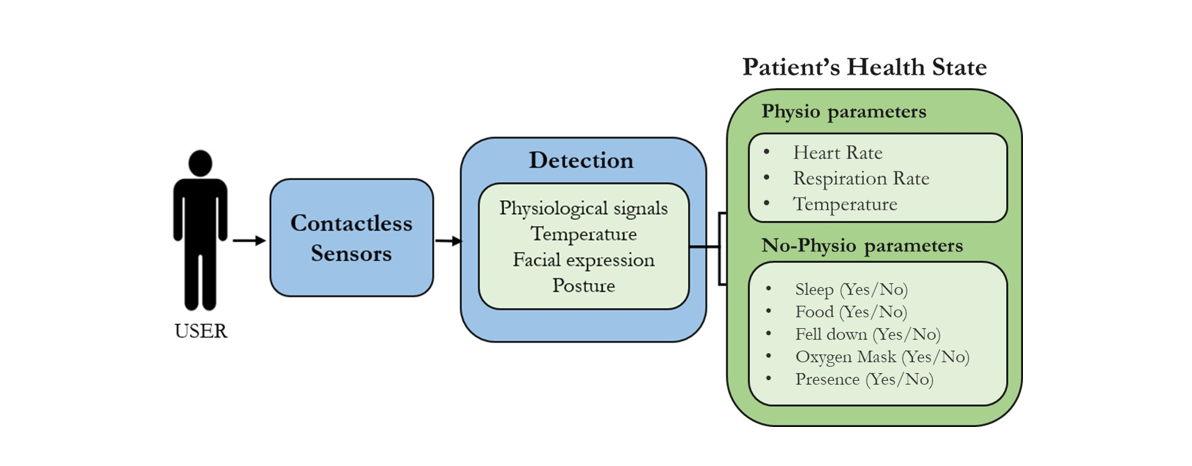
More precisely, the advantages of contactless monitoring in healthcare are manifold:
- Unobtrusive and non-invasive, providing unparalleled patient comfort and well-being during hospitalisation.
- In the wake of the COVID-19 pandemic, contactless monitoring has become increasingly important to prevent the spread of infections, to monitor patients in quarantine, and to avoid transmission of infections to the medical staff.
- No requirement of skin contact, thus minimizing the risk of skin breakdown and abrasions from electrodes. This is crucial for patients with very fragile skin, such as newborns and burned people, as applying/moving of the electrodes causes abrasions and skin layer removal.
- Contactless systems can be re-used by multiple users (cost-effective), as opposed to contact-based systems that should be personal devices or frequent replacement of electrodes with the production of eventual plastic waste (eco-sustainable).
- Utilizes ready-to-use technologies, such as webcams and smartphones, which are readily available and can be easily integrated into the existing healthcare systems.
Project requirements and challenges
The main requirements and challenges of the MARCHESE project are:
- Accuracy. One of the primary challenges of contactless physiological monitoring is achieving a level of accuracy that is comparable to traditional monitoring methods. Factors such as movement, ambient lighting, and patient positioning can all impact the accuracy of the data collected.
- Interference by the environmental factors. External factors such as electromagnetic interference (EMI) from medical equipment, temperature, humidity, and air quality can also interfere with the accuracy of the data collected by contactless monitoring systems.
- Patient Comfort. It is essential to ensure that the use of contactless monitoring technology is comfortable and non-invasive for patients. The system should not cause any discomfort, distress, or anxiety, as this could negatively impact patient outcomes.
- User acceptance. The success of any healthcare technology depends on user acceptance, including both medical staff and patients. The adoption of contactless monitoring systems may be hindered by a lack of familiarity or comfort with the technology, as well as concerns about the accuracy and reliability of the data collected.
- Cost. The cost of implementing contactless monitoring systems may also present a challenge for some healthcare facilities and for home healthcare.
- Technical limitations. There may be technical limitations in the ability of contactless monitoring systems to collect certain physiological parameters, which may require more invasive monitoring techniques.
- Patient diversity. Patients can vary greatly in terms of age, size, skin tone, and other physiological factors, which can affect the ability of contactless monitoring systems to accurately collect data.
- Privacy and Security. As with any healthcare technology, ensuring patient privacy and data security is critical.
System description
BE-CEM group is currently working on the development of a non-contact monitoring system capable of simultaneously monitoring multiple physiological patient signals. The target is to integrate these different monitoring systems into a unified and functional device that can provide a complete picture of the patient's health status.
Heart rate estimation with PPG remote monitoring
During blood flow, blood vessels such as capillaries are characterized by the alternation of expanded and resting/relaxed areas. In other words, blood flows into blood vessels in packets, which correspond to the heartbeat of the person. These bumps can be detected through photoplethysmography thanks to computer vision and machine learning algorithms. The standard method is by contact, in which a infrared light (green light behind the smartwatch) is sent by a LED and received back by a FOTOLED. The difference in absorption between the infrared light sent and received is the indicator of blood volume because blood absorbs infrared light in different way respect to the other tissues. With the same working principle, light is absorbed differently by the blood contained in blood vessels than the surrounding human tissues. The blood volume changes result in slight colour changes on the skin surface.

There are two main factors:
Specular reflection is a mirror-like light reflection from the skin surface and it doesn't contain any pulsatile information. The body motion also is included in this factor. Diffuse reflection is associated with the absorption and dispersion of light in the skin tissues. Its value varies according to changes in blood volume, so it contains the pulsatile information.
The experiment aimed to study the effects of the LHC tunnel environment on the cardiovascular system of healthy subjects. To simulate the tunnel environment, the experiment was conducted in the LHC mock-up with the same lighting conditions. To measure the heartbeat of the subjects, a wrist-worn benchmark device was used, which provided accurate and reliable heart rate data. Additionally, a pan-tilt-zoom camera integrated into the TIM robotic system was employed to record the subjects' heartbeats.

Respiration rate with Laser distance sensor
The laser distance sensor functions by emitting a beam of light aimed towards the subject's chest or abdominal area. The rib cage's expansion and contraction during inhalation and exhalation creates a slight variation in the distance between the sensor and the subject's chest or abdominal area. This distance variation is detected by the sensor and utilized to determine the subject's respiratory rate.

The industrial laser has been adapted from industrial settings for an effective and precise non-invasive method of monitoring respiratory rate. It is completely safe since it is a laser CLASS I, not dangerous for eyes. It is applicable in medical facilities to monitor patients in several hospital wards without the need to apply electrodes and cables on the human body. Additionally, it can be utilized in research settings to investigate respiratory patterns in diverse populations. More investigations are ongoing: some preclinical tests have been already performed on healthy volunteers in the hospital room mock-up.
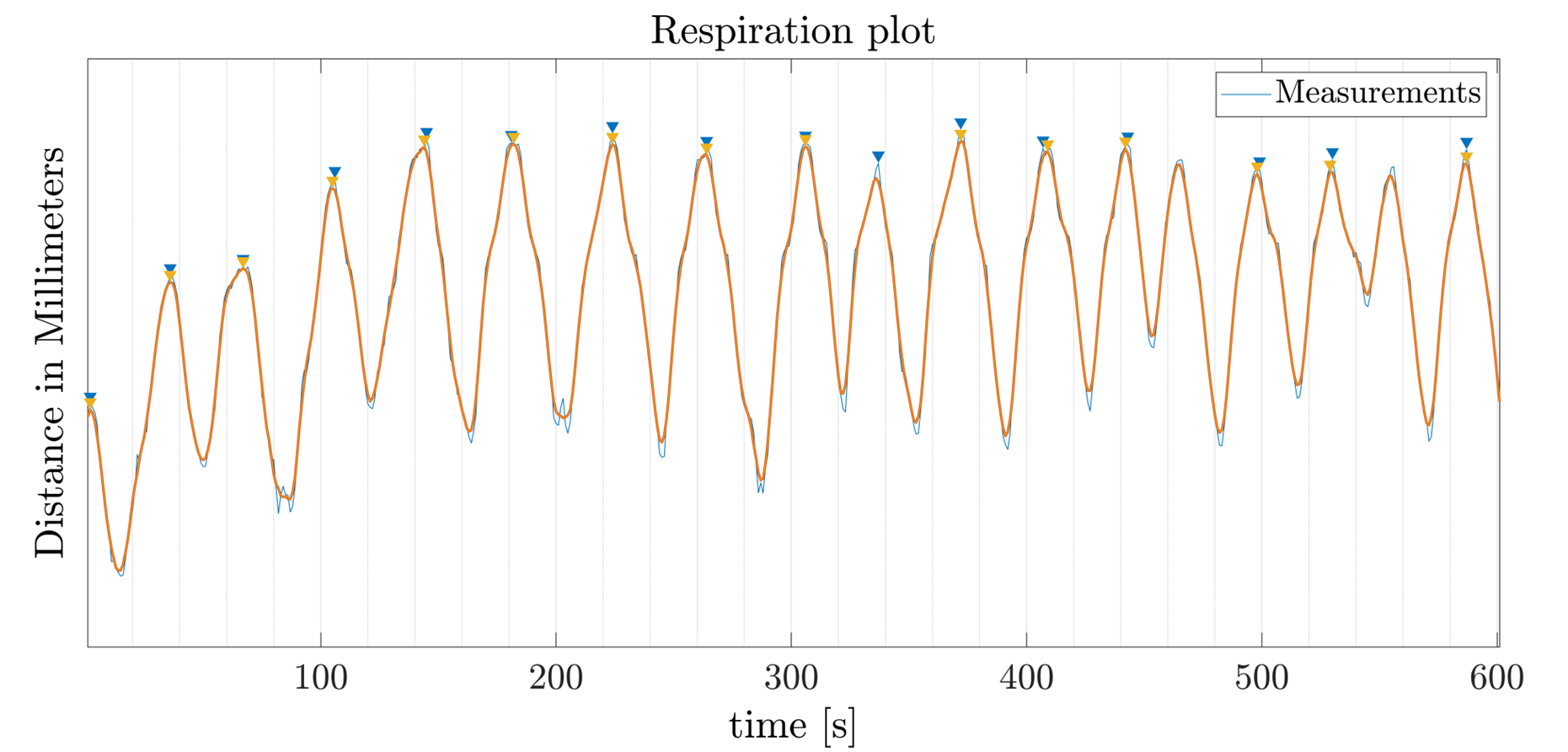
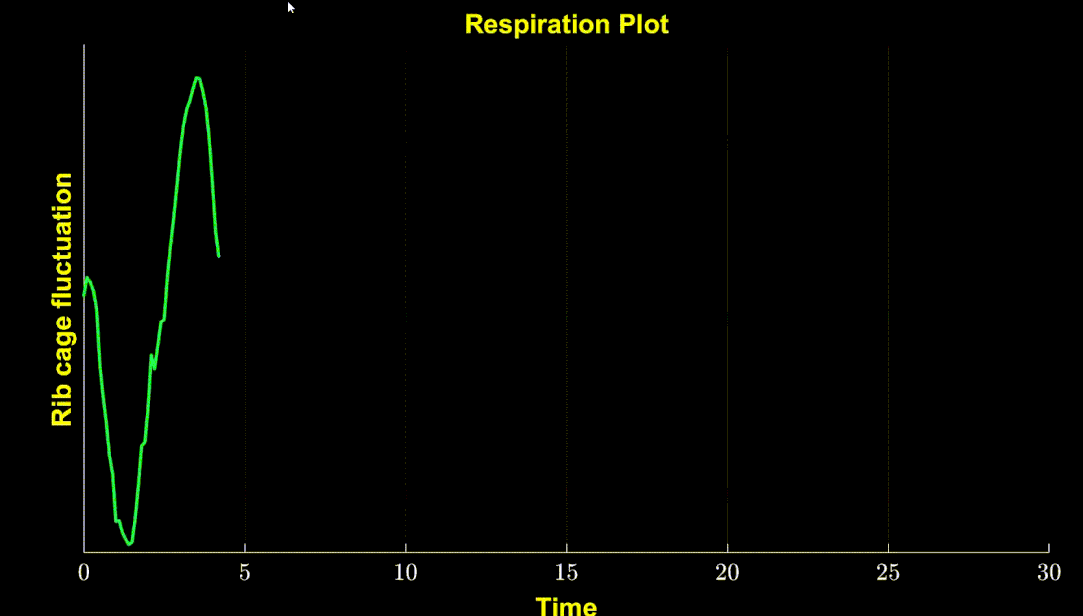
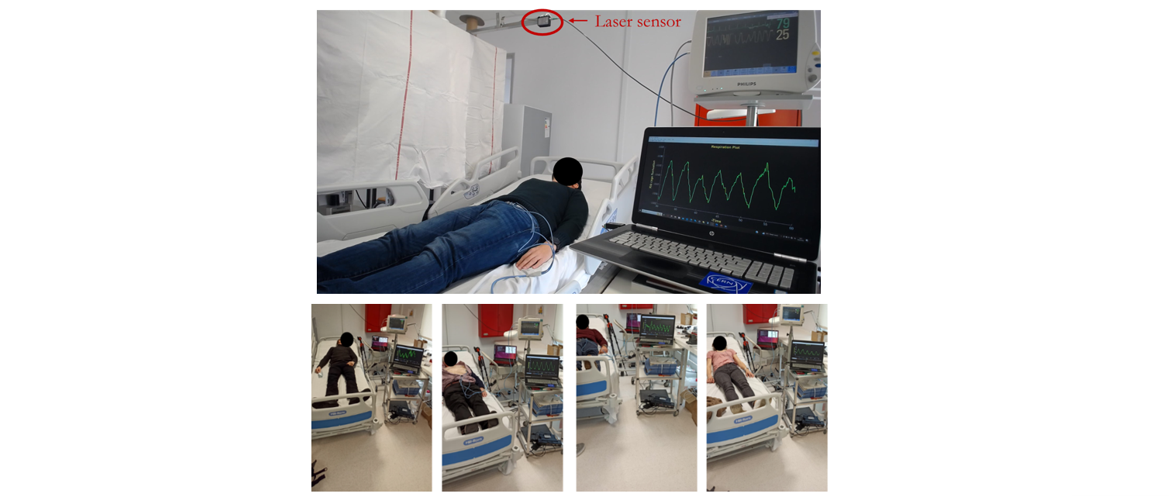
Body pose estimation and movement detection
Besides vital parameters, there are other important for a person's health state evaluation: estimating the body pose of each body link can be an essential task for a variety of purposes, particularly in healthcare settings. Tracking the body position can be crucial in assessing patients' mobility and movement patterns in the hospital environment. Furthermore, accurate body position estimation can be helpful in monitoring the progress of patients during their recovery journey. Regular assessments of body position can help healthcare professionals determine whether a patient is making improvements in their mobility or whether their condition is worsening.
Estimating body posture can also be important for controlling movements related to a patient's agitation and ensuring their safety. When patients become agitated, they may make sudden movements that could put them at risk of injury or harm. By accurately tracking their body posture, healthcare professionals can anticipate and prevent potentially dangerous movements, thereby reducing the risk of harm to the patient.
The system of detection has been implemented using an open-source cross-platform framework (MediaPipe). Different classes of position (supine, prone, lateral, seated) could be identified and detected.
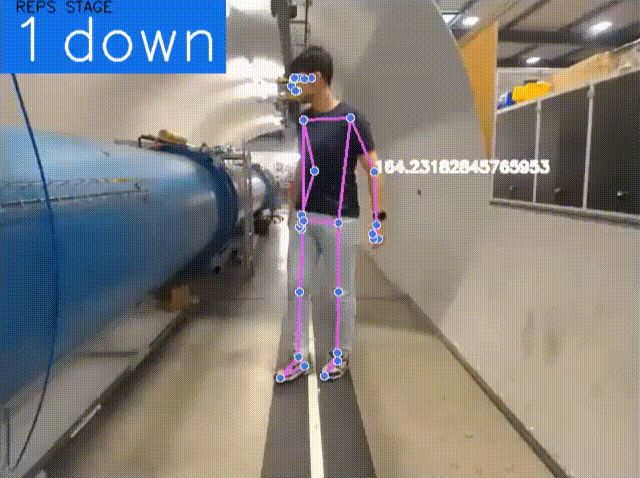
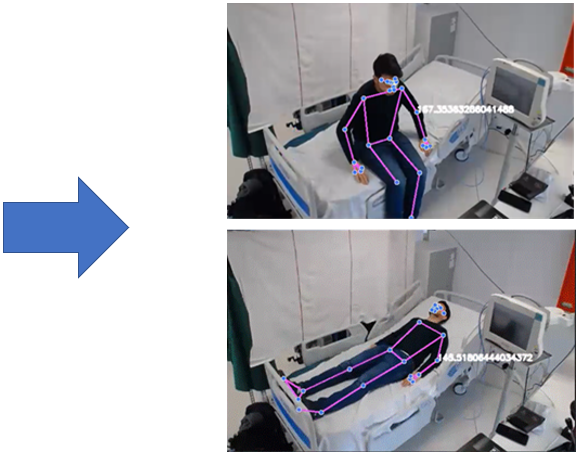
Future steps
The development of a complete and technologically advanced device, that truly meets the needs of medical professionals and is practical, user-friendly and effective in a hospital setting, requires open and regular interaction with medical personnel. That’s why the BE-CEM group constantly consults with medical personnel of the Centre Hospitalier Universitaire of Lille (CHU Lille). Incorporating feedback from medical staff throughout the development process can help to identify potential challenges and areas for improvement, ultimately leading to a more effective and reliable product.
This type of technology could be indeed especially useful in a hospital setting where patients require constant monitoring and attention. Furthermore, by utilizing a contactless monitoring system, medical staff can better manage their time and resources, allowing them to focus on the most critical cases. Pediatrics, geriatrics, and palliative care departments have been identified in the CHU Lille Hospital as those that could potentially benefit most from the application of this technology.
